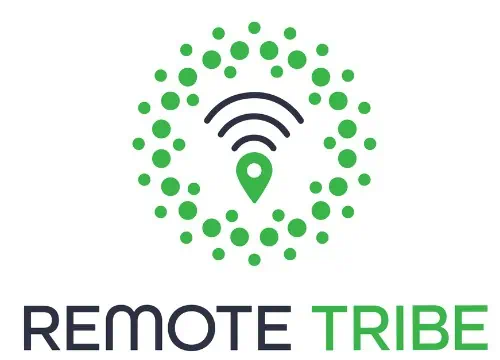Work culture has entirely changed, especially regarding remote, hybrid, and flexible working hours. As per the speculations, more employees will demand remote work, and it will become the norm in the near future. In fact, by 2028, the preference for remote work will increase from 4.3% to 11.2%.
While remote work is the demand of the modern working standards, this shift also brings challenges, especially in ensuring employees stay productive and do not misuse their time. Some employees may not take their work seriously without direct oversight, leading to time theft, where they log hours without actual productivity. Time Theft is of various kinds, and it causes loss of revenue and inefficiencies for businesses.
To combat this, managers must implement strategies that ensure employees use their logged hours effectively. Below, we outline 6 ways to prevent time theft and ensure remote employees remain accountable and productive.
Table of Contents
1. Request Daily Work Summaries (at the end of the week)

prDaily sheets with logged time and work summaries are the simplest yet most effective ways to ensure accountability. Most companies provide a proper format for logging working hours. If you don’t have a format, ask your remote employees to maintain and update a task sheet regularly. And iff your employees already share summaries with managers at the end of the day, ask them to provide an outline with tasks completed, progress made, and any challenges they face.
Compare the summaries with the tasks completed, track their output, and compare it with the reported hours. If someone logs eight hours but only completes minimal tasks, it raises a red flag for potential time theft. Additionally, work summaries create a culture of transparency and accountability, where employees know they are responsible for their time.
Furthermore, these summaries help managers identify productivity bottlenecks and provide necessary support. Employees will also become more mindful of their efficiency, as they must regularly report their achievements.
2. Reward Productivity
Time theft is more common than one may think, especially in a remote work culture. Remote employees may take longer lunch breaks, personal breaks, or complete personal tasks during work hours. Most companies have monthly, quarterly, or yearly reward systems based on punctuality, goal achievement, or behavior.
You can also add rewards for maintaining productivity throughout the year. When employees know their hard work is recognized and incentivized, they are less likely to slack off.
Instead of merely tracking hours worked, link part of their compensation or bonuses to the quality and timeliness of their work. Employees who consistently complete tasks on time and exceed expectations should receive bonuses, recognition, or other benefits. This practice will help you build a results-driven culture where employees work their required hours and focus on delivering high-quality work.
When remote employees understand that their efficient use of time is encouraged, they become more engaged with the on-site team and focus on their responsibilities. As a result, they are more likely to be productive rather than waste time pretending to work.
3. Review Time Logs Weekly
Almost every company has installed a system for tracking the daily hours of employees, whether it is a biometric system or an HR system that tracks time. Similarly, a time tracker for remote workers is a must for maintaining a remote work culture. To reduce time theft, you should review time logs weekly. You can also conduct regular one-on-one meetings with remote employees to discuss their weekly time.
These meetings can help managers compare logged hours with actual results.

These time review meetings should focus on evaluating if the logged hours match the level of work completed and identifying trends of consistent underperformance. Analyze and discuss the logs and address inefficiencies or obstacles affecting productivity.
Through these discussions, you can identify employees who are not using their time efficiently and offer guidance on improving their work habits. Additionally, remote employees will be more diligent with their time, knowing their logs will be reviewed.
Subscribe to our Newsletter
Get The Latest News On Digital Nomad Lifestyle, Remote Working Communities
And Much More.
100% spam free. We never share your email address. Unsubscribe anytime!
4. Use an Online Time Tracker for Remote Workers
If you want to ensure that remote employees do not commit time theft, get time-tracking apps for your employees. A remote time tracker is one of the most effective ways to monitor remote employees’ work habits and prevent time theft. With the increased remote work, many time trackers have been introduced into the market. However, only a few can help with issues like time theft and increasing productivity.
One of these tools is TimeBee’s remote employee time-tracking software that provides unprecedented solutions for reducing time theft. With TimeBee, you can log overall time, track time against tasks, and measure the productivity of each remote employee regardless of their geographical location.
TimeBee accurately logs the total time employees spend working. It records when employees start, pause, and stop their tasks, ensuring you have a clear overview of their work hours. With automated tracking, the workers don’t have to log their time manually; they just have to start the app and stop it at the end of the day. It also captures the breaks they have taken during a day. So, you will know if the employee has taken longer lunch breaks or personal time.
TimeBee generates detailed productivity reports, including activity summaries, total hours tracked, and web and app usage monitoring. These insights show how employees spend their time during the day, for example, if they are engaging in productive work or just wasting their time watching videos and reels.
You can see what websites and apps they used and what tasks they completed during the day. If employees spend excessive time on non-work-related activities, these reports can highlight the issue, helping you prevent time theft.
With Timebee, you can also take periodic screenshots to get visual proof of employee activity throughout their working hours. This feature ensures employees stay focused on tasks, offering transparency in remote work. It helps detect inactivity or distractions, reducing the chances of employees falsely logging hours without actual productivity.

TimeBee tracks keystrokes and mouse clicks to measure employee engagement. If an employee logs hours but shows minimal mouse and keyboard activity, it raises concerns about time theft. This feature ensures that employees remain active and productive during work hours, discouraging prolonged inactivity or unauthorized breaks.
Using the TimeBee time tracker for remote workers, you can measure an employee’s productivity rather than relying solely on reported hours. If an employee frequently logs hours but shows little meaningful activity, it may indicate time theft. Use these insights to regulate workflow and create a structure for employees to focus on their work and achieve the required productivity.

5. Train Employees
Not all time theft is intentional. Some employees may struggle with time management, leading to wasted hours without realizing it. To help them overcome such issues, you need to train them on effective time management techniques that can help them stay focused and improve their efficiency. Many time management techniques can be used to manage time efficiently.
These include the Eisenhower Matrix, employing time blocking, and using the Pomodoro technique. You can choose methods that fit your company’s culture and train your employees accordingly. One highly effective method is the Pomodoro Technique, which involves working for 25-minute focused intervals. After 25 minutes, ask your remote employees to take a 5-minute break. Repeat this cycle four times, then take a more extended break.
By following structured work periods, employees can maintain focus and avoid distractions. Training employees to self-assess their output against their logged time also encourages accountability.
6. Use Task-Oriented Scheduling
Instead of focusing solely on hours worked, managers should implement task-oriented scheduling. This method prioritizes completing tasks and milestones within set deadlines, ensuring employees stay productive. Provide clear instructions on prioritized tasks and ask remote employees to divide their daily time accordingly.
You can use various task-prioritizing techniques to achieve the required efficiency. These methods include the Eisenhower Matrix, A B C D E, Ivy Lee, Pareto Principle, etc.
Such methods provide remote employees with a clear guideline, and they don’t have to contact managers several times. Additionally, it allows managers to evaluate performance based on actual output rather than online time. With proper structure and clear expectations, you can increase focus on quality and efficiency rather than just attendance, ultimately reducing time theft.
With these strategies, you will be more proficient in managing your remote team. By focusing on accountability, training, and intelligent monitoring tools, you can improve logged time and overall productivity.
If you want to become a digital nomad or find your crew, sign up for our free newsletter and get upcoming articles straight to your inbox!
We’ve got some great content on our Instagram and on our Facebook Group too where you can network with other nomads from all over the world.
Your Travel Resources Handy In One Place 🗺️
🧳 Travel Insurance
Enjoy peace of mind during traveling and don’t leave your country without good travel insurance. We recommend Insured Nomads or Genki for international travel insurance.
💰Travel Finances
Get your travel finances smart and straight with Wise or Revolut.
🏨 Accommodations
For a short stay check out Booking or Agoda. Staying longer? Take a look at the offers at Airbnb. Hostels are the cheapest option that you can explore at Hostelworld.
🏡 Recommended places for long-term stay
Wanna know the accommodations where we lived during our digital nomad journey? Check out the places we enjoyed the most!
🎫 Book tours
Are you up for taking part in epic guided tours? Book ones you like using GetYourGuide or Viator.
🚗 Rent a car
To find great rental car deals check out Rental Cars and get ready for your car trip!
✈️ Book a flight
For the hottest deals check out Skyscanner, Kayak, Google Flights or WayAway.
🛡️ VPN
To stay safely connected while traveling, don’t forget about a good VPN. We recommend Surfshark or NordVPN.








No Comment! Be the first one.